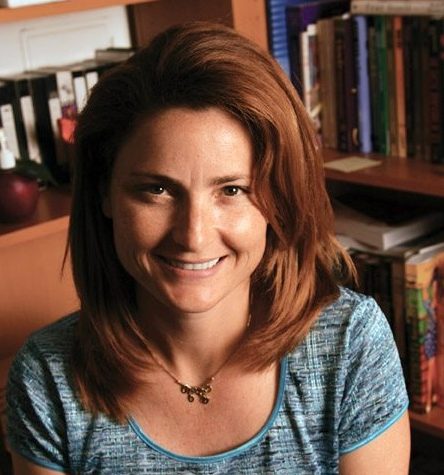Woodbury Psychology Chair Takes on the Invisibility of Bisexuality

Joye Swan, the chair of the Psychology and Social Sciences department, has co-edited a new book, “Bisexuality: Theories, Research, and Recommendations for the Invisible Sexuality” (Springer, 2018) with Shani Habibi. The book brings together the disparate body of research on bisexuality and provides a strong, clear synthesis of the history, data, implications and future recommendations for the field.
We asked Dr. Swan a few questions about her research that takes a closer look at this often misunderstood category of sexuality.
Q: While there has been much discussion and research around sexuality in recent years, bisexuality seems to be less understood, at least among the general public. Can you talk about why that is and did this fact, in some way, prompt your interest in doing this book?
A: Bisexual is the largest of the LGBT categories, however, bisexual individuals are the least likely to be “out” or open about their orientation. Part of the issue is that, unlike other sexual orientations, bisexuality has the distinction of not always being believed. If one were to come out as gay or lesbian, people rarely say “no you’re not.” However, with bisexuality there is a cultural belief that for women, it is just a phase that they will ‘grow out of’ and, for men, there is a belief that they are really just gay but trying to hold on to heterosexual privilege. As we write in the book, they are seen as gay men in a different closet.
Additionally, unless someone is openly bisexual, their orientation gets swallowed up by their current relationship—a bisexual man who is in a relationship with a woman will be assumed straight; a bisexual man in a relationship with a man will be assumed gay. Given that we are a monogamous culture, a majority of bisexual individuals become invisible within society. In turn, as the least likely sexual minority to be ‘out,’ there are very few social role models or communities for bisexual individuals. This lack of community keeps people “closeted” but also leads to the inaccurate impression that bisexuality is rare.
Q: In the book, you argue for a clear, evidence-based definition of bisexuality and standardized measures for assessing sexual orientation. Can you address some of the challenges that need to be addressed in order to attain these goals?
A: I am first and foremost a scientist, therefore, I look to inform my research with data. Data, however, can be good or bad so it is important to examine the data closely. We see that bisexuality has been defined in an innumerable number of ways, often without a thought toward asking what criteria the individual is using to place themselves in this category. (Is it their behavior? their feelings and affect? Etc.) Currently, most research relies on self-reporting—asking the individual to self-categorize their sexual orientation. The problem with self-reporting, particularly with stigmatized behavior, is that many more people engage in the behavior than will identify with it. (Think about the number of men-who-have-sex with men in the 1980s who did not identify as gay.)
On the flip side, if we simply asked people their behavior and inferred their orientation from that, we would find another trove of issues. What about people who have bisexual feelings but who have never engaged in both same sex and cross sex behavior? What behavior or feelings are the barometer? Sexual behavior? Fantasies? Desire? Love/Affection?
As we titled one of our chapters, trying to define bisexuality is a Gordian Knot. However, we state that, as messy as it may seem, defining it is imperative. Imagine if there were no collectively agreed upon definition of cancer. How would we treat people? How would we track the prevalence and prognoses of patients? Although cancer comes in a myriad of forms, we have an overarching definition of what cancer is. This definition allows us to count individuals and track who they are and how they do. For scientific research to be valid, the same should be done for defining bisexuality.
Q: What kind of advice would you give to educators that want to address sexuality and, more specifically, bisexuality?
A: One of the chapters in our book discusses the fact that, of the hundreds of sexuality and LGBT studies degree programs in U.S. colleges and universities, not a single one teaches a stand-alone course on bisexuality. I find that shocking- An L-G-B-T studies major with not a single course on the “B?” All of this perpetuates the invisibility of bisexuality in our culture and contributes to poorer mental health outcomes for bisexual individuals who often feel very isolated—rejected by both the heterosexual and gay and lesbian communities.
I think that we need to educate the educators. It can be as simple as making them cognizant of the omission of this group from their programs. Human sexuality textbooks need to include at least as much discussion of bisexuality (which is more common than gay, lesbian, and transgender persons combined) as they do to gay and lesbian sexuality.